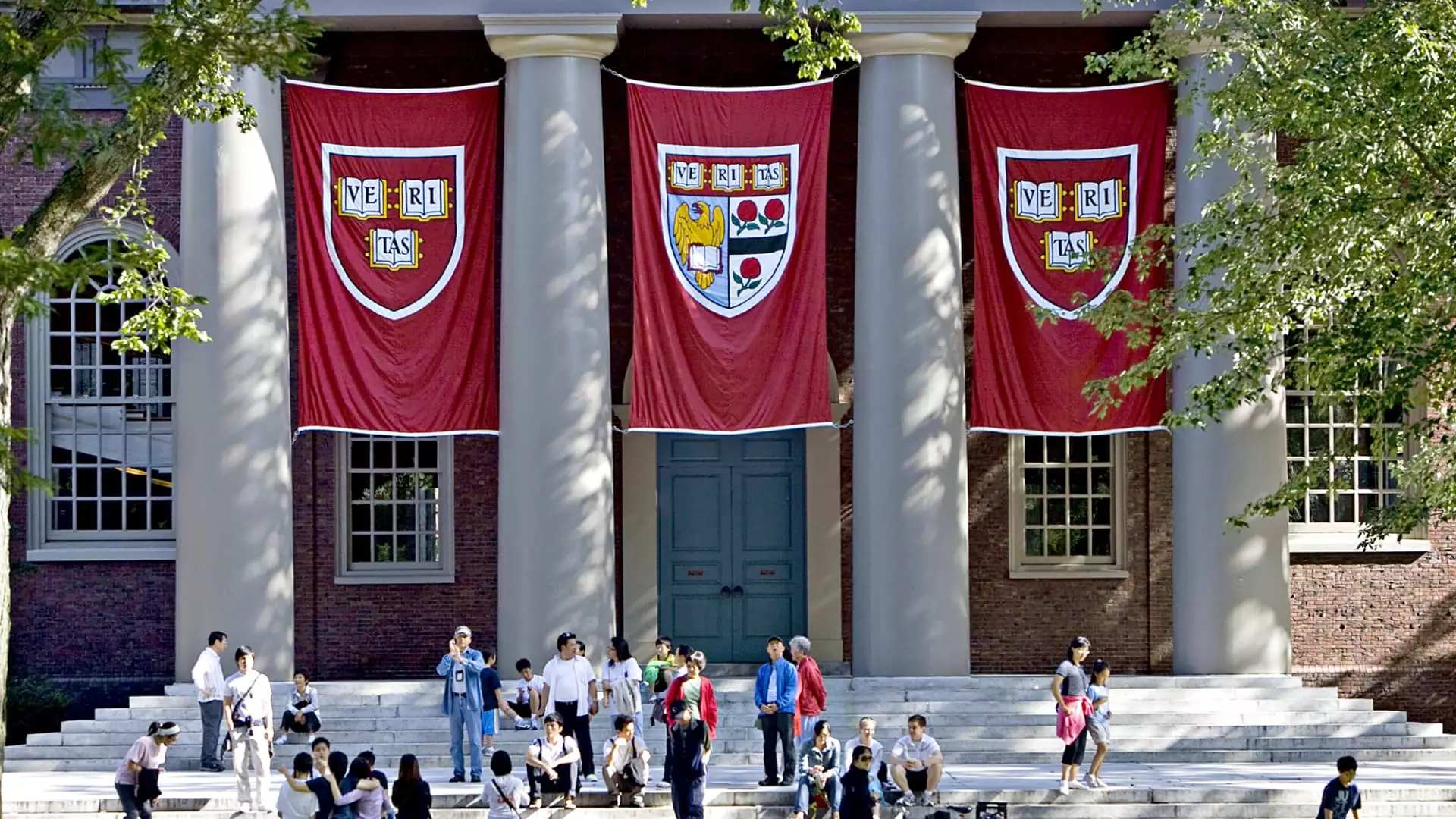The recent announcement from Harvard University to provide free tuition for undergraduates from families with annual incomes of $200,000 or less marks a pivotal moment in the landscape of higher education financing. This shift isn’t merely about one prestigious institution making a progressive choice; it’s part of a larger trend among elite universities aiming to mitigate the financial burdens of a college education, which have become ever more oppressive for families nationwide.
The growing crisis of college affordability has led to almost an existential dread among prospective students and their families. The average annual tuition at prominent institutions like Harvard, which tops $56,000, pushes the total cost of attendance to nearly $83,000 when factoring in living expenses. Many students are left grappling with the prospect of crippling student debt, especially in a climate where substantial student loan balances leave graduates starting their professional lives in financial turmoil. To counter this, leading universities are beginning to embrace financial aid policies that seek to eliminate these barriers entirely.
Rising to the Challenge
Harvard’s initiative is noteworthy in that it doesn’t stand alone; it is part of an expanding fraternity of colleges willing to absorb the costs traditionally borne by students. Institutions like the University of Pennsylvania and the Massachusetts Institute of Technology have also pledged to offer varying degrees of tuition assistance. In just the past year, Vanderbilt University and Dartmouth have made headlines by introducing full-tuition scholarships, igniting a competitive ‘affordability arms race’ among elite educational establishments.
This competition is wholesome, restoring faith in what higher education should represent: the democratization of knowledge, regardless of one’s financial backing. As Hafeez Lakhani aptly pointed out, Harvard is “not only matching Princeton but taking another step forward.” The evolution is indicative of a more inclusive vision; one where socioeconomic status doesn’t dictate educational access.
The Debt Crisis and Its Implications
The looming specter of student debt is not just a personal burden for many; it is a national crisis. According to surveys, the overwhelming concern among college-bound students now centers around the fear of accumulating insurmountable debt. The repercussions go well beyond financial strain; they affect mental health, career choices, and the ability to contribute to the economy post-graduation. The repercussions ripple through generations, with many graduates lending their voices to a broader discussion about reform in higher education financing.
As more esteemed universities adopt no-loan policies, we witness a paradigm shift in how educational institutions prioritize financial aid versus profit. This raises a significant question: Should colleges prioritize endowment growth over student accessibility? The step taken by Harvard and others appears laudable, yet some critics argue that the wealth of these institutions—often in the billions—should have spurred action long before now. The argument is persuasive; it suggests that universities should serve as stewards of knowledge and opportunity rather than as businesses seeking to maximize profit margins.
The Unaddressed Costs of Attending College
While the promise of free tuition is a potent solution, it doesn’t address the full range of costs associated with college attendance. Students often still face substantial expenses related to housing, food, books, and fees. It is a scenario reminiscent of a band-aid applied to a larger wound; without holistic reform that accounts for the full financial burden of college, free tuition could be a hollow promise for some.
A comprehensive approach should examine all aspects of affordability, weighing factors such as living expenses and ancillary costs often overlooked in these discussions. Universities that commit to free tuition must also be vigilant in addressing these other variables. Otherwise, students may still face daunting financial hurdles that could render their educational experiences less impactful than intended.
A Call for Broader Change
As we celebrate strides made by institutions like Harvard, we must also recognize these changes as a beginning, not an end. Financial initiatives should extend to all educational settings, not just elite universities. The need for systemic change reverberates through the entire educational fabric of the nation. Instilling a culture of accountability among universities while advocating for cheaper community colleges and vocational training programs can create a more adaptable and skilled workforce.
In narrowing the opportunity gap and enhancing access to quality education, we can elevate not just individuals but society as a whole. The promise of free tuition must catalyze broader dialogues about economic equity, paving the way for an education system that genuinely reflects our values and aspirations as a society. This evolution in financial aid represents not only an opportunity for students but also a challenge for institutions to redefine their roles in an ever-changing world.


Leave a Reply